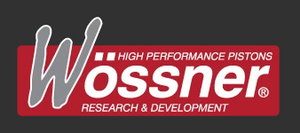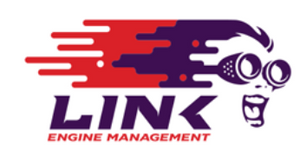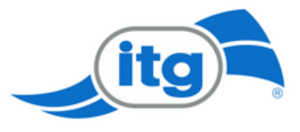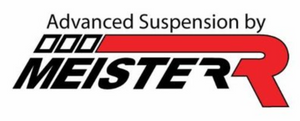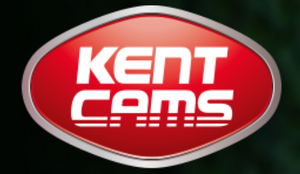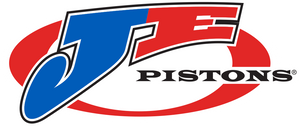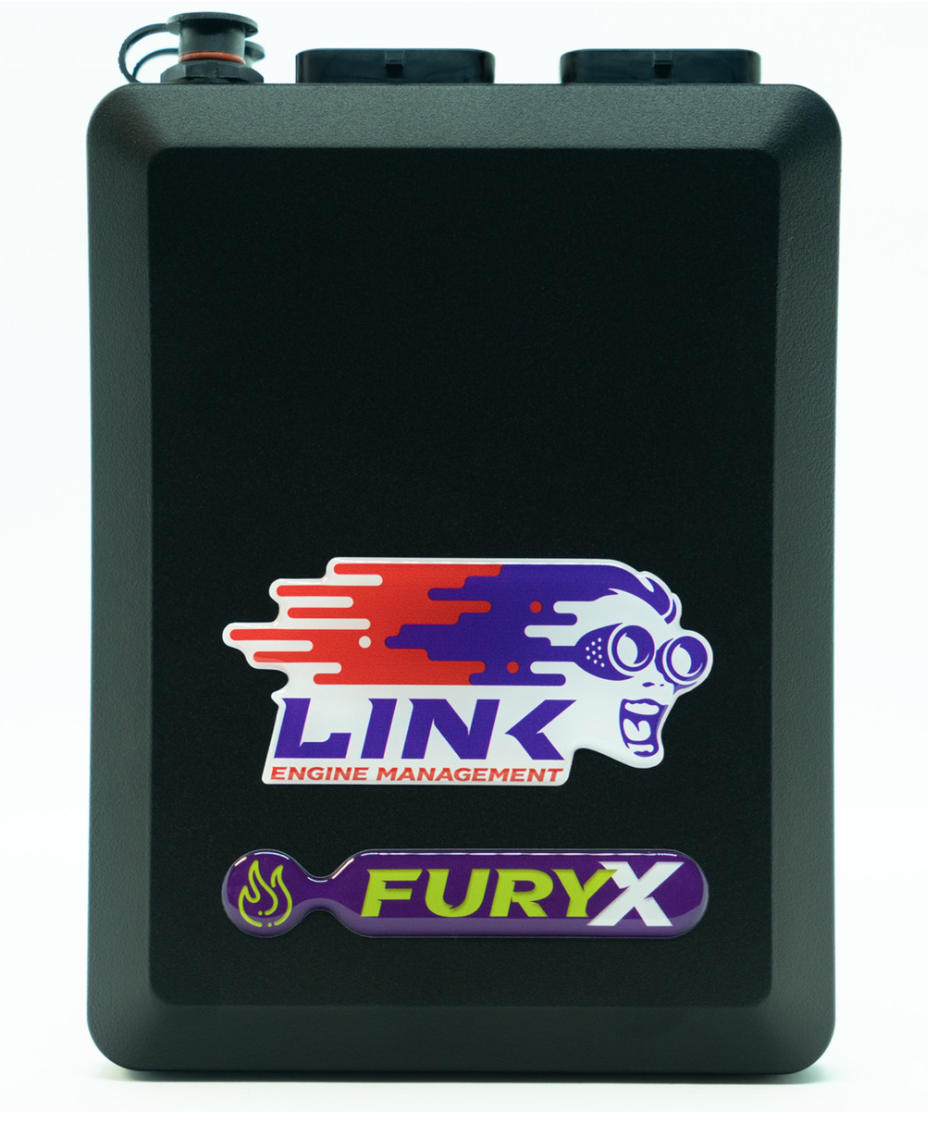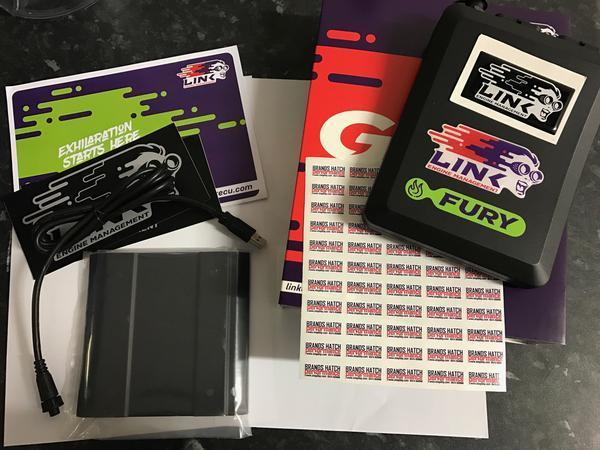Link G4X Fury Wirein ECU + Lambda + Dash Options
Link G4X Fury Wirein ECU + Lambda + Dash Options - Fury Only / No / No is backordered and will ship as soon as it is back in stock.
Couldn't load pickup availability
OEM References
OEM References
Description
Description
A premium ECU with Onboard Digital Wideband.
The FuryX is a premium ECU like the XtremeX, but with added Onboard Digital Wideband Lambda Control. Now on the G4X platform, the FuryX features a faster processor, faster communications & a huge 512 megabytes of data logging! With 8 injector drives and 6 ignition drives, the FuryX can control up to 3 rotors or 6 cylinders with sequential injection and direct spark, making it an excellent choice for professional level motorsport or more demanding road car applications. The added benefit of a Onboard Digital Wideband Lambda Controller means higher accuracy of the unit, plus a simple setup. The FuryX comes supplied with stickers, a quickstart guide, a mounting bracket and a USB tuning cable.
SPEC OVERVIEW:
Inputs
8/10* x Digital inputs
4 x Temperature inputs
9 x Analog inputs
2 x Trigger inputs
2 x Knock inputs
1 x LSU 4.9 Wideband lambda sensor input
Outputs
8 x Injection drives
6 x Ignition drivers
10 x Auxiliary outputs^
+5V Sensor power supply
+8V Sensor power supply
^unused fuel and ignition drives can be used as additional Aux outputs
Communications
2* x CAN bus
1x Serial (RS232) connection
1x USB tuning connection
Physical
Dimensions: 185mm(L) x 130mm(W) x 40mm(H) (without looms)
Mass: 680grams
*DI 9 & 10 pins used by second CAN Bus
What's in the box?
Supplied with USB tuning cable and mounting bracket.
Engine Configurations
- 1-12 Cylinder Distributed
- 2-12 Cylinder Wasted Spark
- 1-6 Cylinder Direct Spark
- Odd Fire Engines
- 2-Stroke, 4 Stroke and Rotary Engines
- Configurable Firing Order
- Configurable TDC Points (for odd fire)
Inputs/Outputs
- 8 x High Current Injector Drives (suits high impedance injectors)
- 6 x Ignition Channels
- 10 x Auxiliary Outputs (All PWM capable). Aux5-8 can control Stepper Motors and drive High or Low
- 8/10 Digital Inputs (All capable of reading frequencies up to 10kHz). *DI 9 & 10 pins used by second CAN Bus
- +5V Out
- +8V Out
- 4 Temperature Inputs (Configurable pull-ups on ANT1&2)
- 9 x 0-5V Analog Inputs
- 2 x Trigger Inputs (Reluctor, Optical or Hall Sensors)
- On Board Baro
- Built in Wideband Controller
- 3 Axis Accelerometer
Fueling adjustments
- Traditional, Modelled and Modelled Multi-Fuel Equations
- Single-Point Group, Multi-Point Group, Sequential, Semi-Sequential, Group Staged, Sequential Staged and Sequential/Multi Point Group Staged injection modes
- Asynchronous injection (can add more fuel after initial injection if conditions change)
- Quick tune (automated fuel tuning)
- Up to 440 Zone Fuel Table with configurable load and RPM centers. Configurable X and Y Axis Parameters
- Multiple Fuel Tables
- Up to 6D Fuel Mapping (3D Fuel Table + 3x3D Overlay trim tables)
- Injection Rate Control for Group Injection Modes
- Master Enrichment for Traditional Fuel tuning
- Pre-Crank Prime
- First Crank Prime
- Crank Enrichment
- Post Start Enrichment
- Warm Up Enrichment
- Acceleration Enrichment
- IAT Fuel Correction
- Injector Deadtime Compensation
- Injector Short Pulse Width Compensation
- Injector Timing Control with Beginning, Middle or End Injection Definable
- AFR Table Correction
- Dual Closed Loop Lambda
- Individual Cylinder Fuel Trims
- Overrun Fuel Cut
- Idle Load Trims
- Fuel Temperature Correction
- Barometric pressure compensation
- Injector test function
Ignition Adjustments
- Distributor, Twin Distributor, Wasted Spark, Direct Spark, Rotary leading Wasted and Rotary
- Leading Direct Ignition Modes
- Up to 440 Zone Ignition Table with configurable load and RPM centers. Configurable X and Y Axis Parameters
- Configurable Maximum Advance
- Configurable Spark Duration
- Configurable Spark Edge
- Dwell Time Table with configurable X and Y Axis Parameters
- Multiple Ignition Tables
- Up to 6D Ignition Mapping (3D Ignition Table + 3x3D Overlay Trim Tables)
- Individual Cylinder Ignition Trim
- IAT Trim
- Voltage Correction
- ECT Trim
- OEM Compatibility
- CDI Compatibility
- Transient ignition retard
- Adjustable ignition delay compensation
- Ignition test function
- Idle ignition control
Limits
- Engine Temperature Dependent Progressive Limiting
- Dual Vehicle Speed Limits
- System Voltage Limit
- User Configurable RPM Limits based on external input
- MAP Limit with dual tables
- Optional hard cut
- Progressive cut control
- Selectable fuel or ignition limiting
- Ignition trim and configurable trim decay
- Adjustable control range
- Selectable cut effect (adaptive or constant)
Auxiliary Output Options
- Each Output independently configurable
- Unused ignition and Fuel outputs available as auxiliary outputs
- General Purpose Outputs
- General Purpose PWM Outputs
- Fuel Pump Control
- Fuel Pump Speed Control
- Engine Fan Control
- Air Con Clutch Control
- Air Con Fan Control
- Intercooler Spray Control
- Tacho Control
- Speedo Control
- Check Engine Light
- Purge Solenoid
- Oxygen Sensor Heater
- Switched Cam Solenoid Control
- ECU Hold Power Control
- Shift Light Control
- Starter Control
- VVT Cam Solenoid
- Boost Control Solenoid
- Test functions for each output
- Closed loop Stepper Control & Rotary Oil Pump Control
- Idle Speed Soloenoid
- Idle Speed Stepper
- Internal E-Throttle Controller
- External E-Throttle
Digital Inputs
- Each channel independently configurable with pull-up resistors and active state control
- All digital inputs capable of reading frequencies of up to 10kHz
- Duty Cycle measuring on all digital inputs
- Turbo speed
- Ethanol Sensor Control
- Wheel Speed Detection on all digital inputs with additional general-purpose speed inputs
- Anti-Theft control through digital inputs, over CAN or both
- General Purpose switches, speeds, rpms and frequencies
- large variety of input types
Analog Inputs
- Each input independently configurable with preset or custom calibrations and configurable fault conditions
- Built in 3 axis accelerometer
- Built in Barometric Pressure Sensor
- Large variety of Analog input functions
- General Purpose Temperatures, Pressures, Rotary Switches and more
- Analog Inputs can also be used as Digital Inputs
- Large number of built in calibrations
- Ten Calibration Tables and 3 Linear Calibrations for when a custom calibration is required
Triggering
- Digital Trigger Decoding
- Reluctor, Optical Proximity or Hall Sensors
- Programmable filtering and arming thresholds
- Configurable trigger patterns or preset triggering options
- Supports nearly all OEM trigger patterns and custom trigger arrangements
Programmable Math Processing
- Eight individually controllable math channels with up to four parameters in each
- Math channels can be used as table axis’s and as digital or analog inputs
Motor-Sport Features
- Anti Lag
- Launch control
- Gear Shift Control (Digital Inputs, Gear Lever Force or Gear Barrel Position)
- Traction control
Anti-Lag System
- Dual 3D Fuel enrichment, Ignition cut and Ignition retard Tables
- Optional Cyclic idle (normal and cool-down)
- Optional 3D Idle controller Override Tables (one for Antilag and one for Cyclic Idle)
- Lockout condiitons based on engine speed and throttle position with hysteresis
- Launch Control
- Single RPM, 3D RPM Table or Latched (RPM when button pressed) Launch modes
- Progressive cut control
- Selectable fuel or ignition limiting
- Selectable cut effect (adaptive or constant)
- Adjustable control range
- Vehicle speed controlled
- Ignition Trim with optional 3D table and relative or absolute ignition angle options
- Optional 3D Fuel Trim table
Gear Shift Control
- Digital input (clutch switch), gear lever force (sequential gearbox), gear lever force (H pattern gearbox), and gear barrel position sensor input options
- Timed or controlled modes
- Adjustable progressive cut levels
- Power re-introduction control
- Ignition retard control
- Fuel enrichment control
- Cut duration based on gear
Traction Control
- Disable switch
- Various Lockout conditions
- Multiple 3D slip Threshold tables
- Traction Control - controlled tyre slip to improve vehicle safety and driveability
- Uses an advanced Torque Management system to reduce engine torque
- Idle Control
- Solenoid, Stepper or EThrottle Control
- Open or Closed loop actuator control and Closed loop Ignition control available
- Large variety of position offsets for open loop and additional target offsets for closed loop actuator control
- Specific start-up offsets and hold times
- Dashpot functionality to smooth re-entry into idle and prevent undershoot
Electronic Throttle Control
- Has an internal EThrottle Controller and supports external controllers
- Multiple 3D target tables
Boost Control
- Open or Closed Loop Boost Control
- Multiple Target and Base Position Tables
- Multiple Trim tables
- Boost by Gear control
Knock Control
- 2 Built in Knock inputs
- Fuel Enrichment and Ignition Retard functionality
- Adjustable frequency filter
- Adjustable gain (per cylinder)
- Individual cylinder detection
- Individual cylinder ignition retard and fuel enrich
- Adjustable detection angle (start/end)
- Noise threshold table (3D)
- Adjustable ignition retard and fuel enrich sensitivity
- Configurable ignition reintroduction and fuel enrich decay
Variable Valve Timing Control
- Up to 4 cams independent control
- Supports many OEM applications
- Closed loop control
- Multiple 3D Cam angle target tables
- Optional advanced PID control settings for advanced tuners
- Automatic function for calibrating cam angles
Chassis and Body
- AC Control - Basic and Advanced modes available
- AntiTheft - Via Digital Input, CAN or both
- Speed based cruise control (EThrottle only)
- Gear Detection - CAN, RPM/Speed or Analog Position Sensor
- Individual wheel speed sources with the ability to specify Driving and Non-Driving wheel speed sources
- Starter control - Multiple options available from very basic to Touch to start.
Torque Management
Logging
- 512 Megabytes of Datalogging
- Up to 250 ECU Logging channels
- Up to 1kHz per channel with a maximum total sample rate of 100kSamples/s when using ECU Logging
- Unlimited channels when using PCLink logging
Communications
- Tuning Port USB on board
- Two CAN buses
- Custom CAN configuration allowing tuners and end users to add support for new CAN devices
Processing
- 150 MHz Specialised Engine Management Microprocessor
- Ignition control to 0.1 degree, fuel to 0.01 ms
- 32 Bit Floating Point Calculation
- 12 Bit ADC Resolution
- 20000+ RPM
- 4Gb Non Volatile Flash
Environment
- Internal Temperature Range -10 - 85oC
- Ambient Temperature Range -30 - 90oC
- Voltage 8 - 22V
- Operating Current 200mA
- Electrical protection on all inputs and outputs
- Onboard Barometric Pressure Sensor
Packaging Contents
- G4X FuryX ECU
- Wiring and Installation Instructions
- USB tuning cable
- 2 large Link Stickers
- 2 small Link Stickers
Manufacturing Standard – ISO 13485
Additional Accessories (purchased separately)
- Intake Air Temperature Sensor
- 3/8 NPT (Aluminium or Steel Mounting Bosses to suit)
- 3 Channel Link Igniter
- Throttle Position Sensor
- 3 Channel Link Igniter
- Wideband O2 Controller & Sensor
- Injector Ballast Resistor Packs
Reviews (0)
Reviews (0)
Payment & Security
Payment methods
Your payment information is processed securely. We do not store credit card details nor have access to your credit card information.

